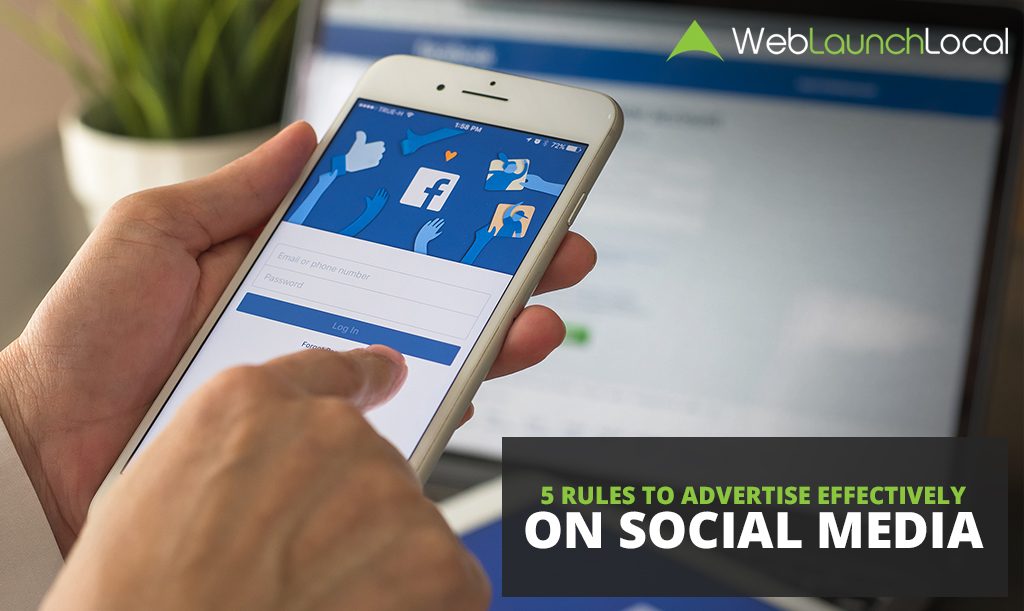
Advertising on social media is a necessity of running a modern-day business, even if you’re only a local operation. There are many reasons for this, but the first and most important one is that your audience is more likely to find you there regardless of demographics. Still, the fact that you should do it doesn’t mean that it’s easy to do or understand what’s giving you good results if you don’t have some training and experience in digital marketing; don’t worry, we’re here to help out!
The following tips will not make you a bona fide digital advertising expert but will guide you through the most common issues people run into when trying to do it. The most important thing you’ll get out of them is avoiding the most common pitfalls of online advertising, such as overspending on an ineffective campaign, or missing your target by a large margin. Think of it as a basic guide of what not to do on social media for business. Let’s get to it!
#1: Always add a call-to-action
You better believe that calls-to-action are an effective way of guiding your customers’ actions in the right direction, and not including one in their ads is a mistake that too many businesses still make today. From a subscription to your newsletter to a potential customer willing to engage with your brand, a call-to-action gives people a clear idea of what the next step is for them, and it motivates them to take it. Remember to keep them simple and easy to see.
#2: Start doing A/B testing to compare ads
Even with a rock-solid marketing strategy, you’d have to be psychic to know right away which ads are going to be a home run, and which ones will underperform. Take the guesswork out of the equation and get real data by A/B testing your ads, so you can know which visual, copy, and headline combination will be a real winner. Not only does it let you compare the results of an ad on a smaller scale, saving you lots of money down the line, but you can also use it to further refine your target audience and perfecting your messages for them.
#3: Say ‘no’ to all forms of clickbait advertising
As internet users, we are all exposed to clickbait articles and ads daily. The images and headlines are strong on their own, yet vague enough to generate curiosity; once you click them, however, you’ll be met with subpar content (if any) and a form of some kind asking you to fill out your data in the hopes of selling you something. Well, using clickbait ads is a surefire way to lose a potential customer’s trust and interest immediately, but that’s not all. Facebook grades the content posted by how long people stay reading it. If people back out of a page in just a few seconds, that’s bad, but if they find quality content that keeps them reading on, then it doesn’t get pushed back. In other words, your content has to deliver on what your headline is selling.
#4: Have a landing page for each purpose
An ad is just the gate that leads your audience to where it matters for them to be, and the mistake that many companies make is directing all that traffic that comes through the gate to one single landing page, or worse, straight to the homepage. Depending on what your ad is about, you should make a landing page that reflects that; if you want people to know about your new product, make your landing page all about it; if you want people to subscribe to your newsletter, give them the form to fill out right on the first click. Sending them straight to the homepage is just making them look around for what they want, potentially losing their interest before they manage to do it.
#5: Engage directly with your customers
If you think that social media is just an outlet for you to blast out ads and promotions one after another, then forgetting about them, you’re not getting the full grasp of it. Taking the time to listen and respond to your customer’s messages and comments is part of what separate successful brands from the others. Just look at the numbers: 66% of customers on average stop doing business with a company if they have a bad customer service experience, while those who feel cared for and get positive responses to their feedback to stay up to 40% more time with those companies. So, when people take the time to comment on what you post, make sure to monitor them for a while, answer their questions, and even carefully defuse complaints that might arise in there.
These tips are sure to boost your numbers in the right direction, but you should already know what your next step is going to be after that. If you’re feeling at a loss of how to expand your business online and where to go from there, you might need the help of an expert!


